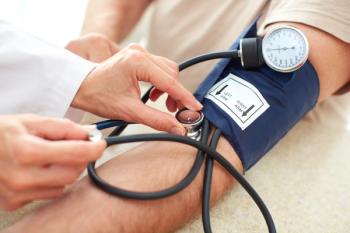
A High-Performance Room-Temperature Acetone Gas Sensor Could Aid Diabetes Detection
Key Takeaways
- The sensor detects acetone in breath, indicating diabetes, with a threshold of 1.8 ppm, offering a practical alternative to sweat-based glucose detection.
- A zinc oxide and laser-induced graphene foam composite enables high sensitivity and low detection limit, with a fast response and recovery time.
The sensor detects acetone levels in the breath to indicate diabetes.
A new sensor developed by a research team at Penn State could aid the diagnosis of diabetes and prediabetes onsite within a few minutes of using a breath sample. The study authors, who published their findings in the Chemical Engineering Journal, noted that the sensor detects acetone levels in the breath, as levels above a threshold of about 1.8 parts per million indicate diabetes.1,2
“While we have sensors that can detect glucose in sweat, these require that we induce sweat through exercise, chemicals, or a sauna, which are not always practical or convenient,” Huanyu “Larry” Cheng, memorial associate professor of engineering science and mechanics at Penn State, said in a news release. “This sensor only requires that you exhale into a bag, dip the sensor in, and wait a few minutes for results.”2
Understanding Acetone's Role in Diabetes
According to the WHO, the number of individuals living with diabetes increased from 200 million in 1990 to 830 million in 2022, with a more rapid rise occurring in low- and middle-income countries than in high-income countries.3
Although the number of diabetic patients is rising, nearly half of those with the disease—which is currently marked as nearly 240 million individuals globally—remain undiagnosed. This highlights the importance of early diagnosis, especially considering that diabetes is responsible for 6.7 million deaths annually.1
Acetone is a colorless, water-soluble liquid with a strong odor that can be harmful when it evaporates into the air. While mild exposure can cause dizziness and nausea, high concentrations can permanently damage the central nervous system. Despite these risks, acetone is also a naturally occurring biomarker in human breath, often used to indicate diabetes. However, detecting acetone in the breath of patients with diabetes has required bulky, expensive, and nonportable equipment, emphasizing the need to develop sensors that are more effective and practical for real-life detection of diabetic ketoacidosis due to their high sensitivity and small size.1
Development of Diabetes Sensor
In their research, the investigators used a highly sensitive room-temperature acetone gas sensor created by combining zinc oxide with a porous laser-induced graphene (LIG) foam. The study authors noted that the sensor is fabricated on LIG interdigital electrodes using a laser direct writing and drop-casting method.1,2
“A junction formed between these 2 materials that allowed for greater selective detection of acetone as opposed to other molecules,” Cheng said in the news release.2
The laser demonstrates a large response to acetone, with a fast response and recovery time and an extremely low detection limit of 4 parts per billion. By including a type of molecule, a sieve, it also makes the sensor resistant to humidity, which allows accurate detection of acetone in exhaled breath, aiding early diagnoses and treatment.1,2
“If we could better understand how acetone levels in the breath change with diet and exercise, in the same way we see fluctuations in glucose levels depending on when and what a person eats, it would be a very exciting opportunity to use this for health applications beyond diagnosing diabetes,” Cheng concluded.2
Currently, the sensor requires individuals to breathe directly into a bag to mitigate factors that could interfere with the test. However, the study authors noted that in the future they plan on administrating the sensor directly under the nose or attached to the inside of the mask since the gas can be detected in the condensation of an exhaled breath.1,2
REFERENCES
1. Yang L, Fu, W, Wang Y, et al. ZnO/LIG nanocomposites to detect acetone gas at room temperature with high sensitivity and low detection limit. Chemical Engineering Journal. Volume 519. 2025. doi.org/10.1016/j.cej.2025.164857.
2. New sensor is a breath of fresh air for diagnosing diabetes. EurekAlert! News release. August 25, 2025. Accessed August 26, 2025. https://www.eurekalert.org/news-releases/1095814
3. World Health Organization. Diabetes. News release. November 14, 2024. Accessed August 26, 2025. https://www.who.int/news-room/fact-sheets/detail/diabetes
Newsletter
Stay informed on drug updates, treatment guidelines, and pharmacy practice trends—subscribe to Pharmacy Times for weekly clinical insights.



















































































































































































































